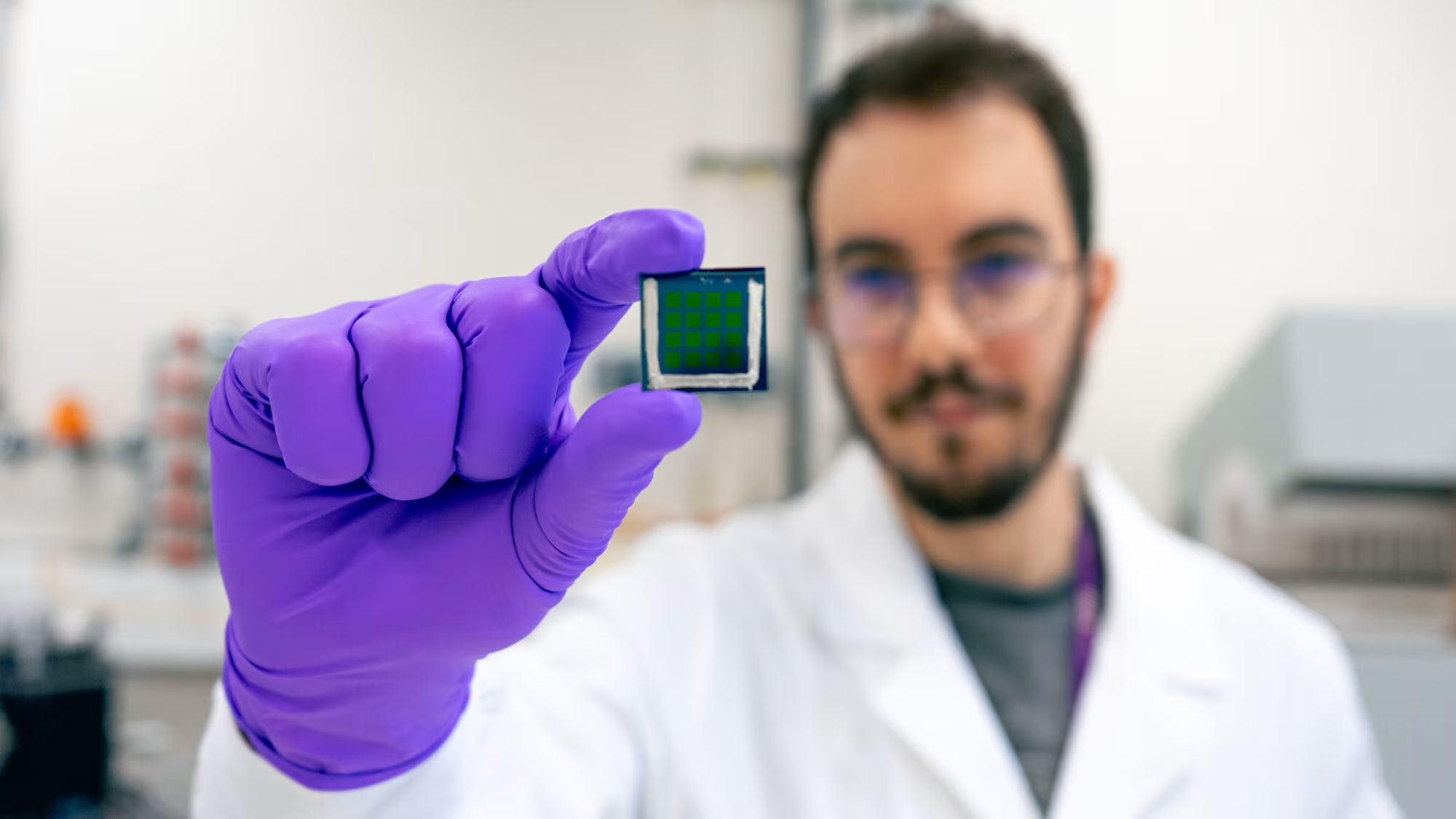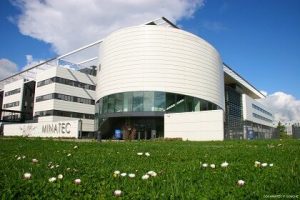INL researchers boost efficiency of ultrathin solar cells
© Rui Andrade, INL
Ultrathin solar cells are a promising path for clean energy: they use far less material, can be manufactured faster, and even applied on flexible or curved surfaces, in comparison with conventional technologies. But there is a catch – when the absorber layer is too thin, the cells lose performance because they do not capture enough light and energy leaks out the back.
A research team at INL, led by research group leader Pedro Salomé, in collaboration with other research institutions, including Uppsala University, in Sweden, has now developed a clever nanostructured “mirror” that solves part of this problem. By embedding an ultra-thin patterned layer of gold and encapsulating it with aluminium oxide, the team created a rear contact that both reflects light back into the solar cell and mitigates energy losses at the back interface. “This works by providing interface passivation,” explained Pedro Salomé.
The innovation lies not only in the design, but also in the way it’s made. Using one-step nanoimprint lithography, the researchers avoided the costly, multi-step nanofabrication processes usually required for this type of architecture. Pedro Salomé adds “this paves the way for industrial scale-up”.
The INL International Iberian Nanotechnology Laboratory, located in Braga (North of Portugal), is a member of the SiNANO Institute.
To know more about INL expertise and research interests : https://www.sinano.eu/sinano-vision-profile/members/inl




 Minatec – CROMA
Minatec – CROMA
